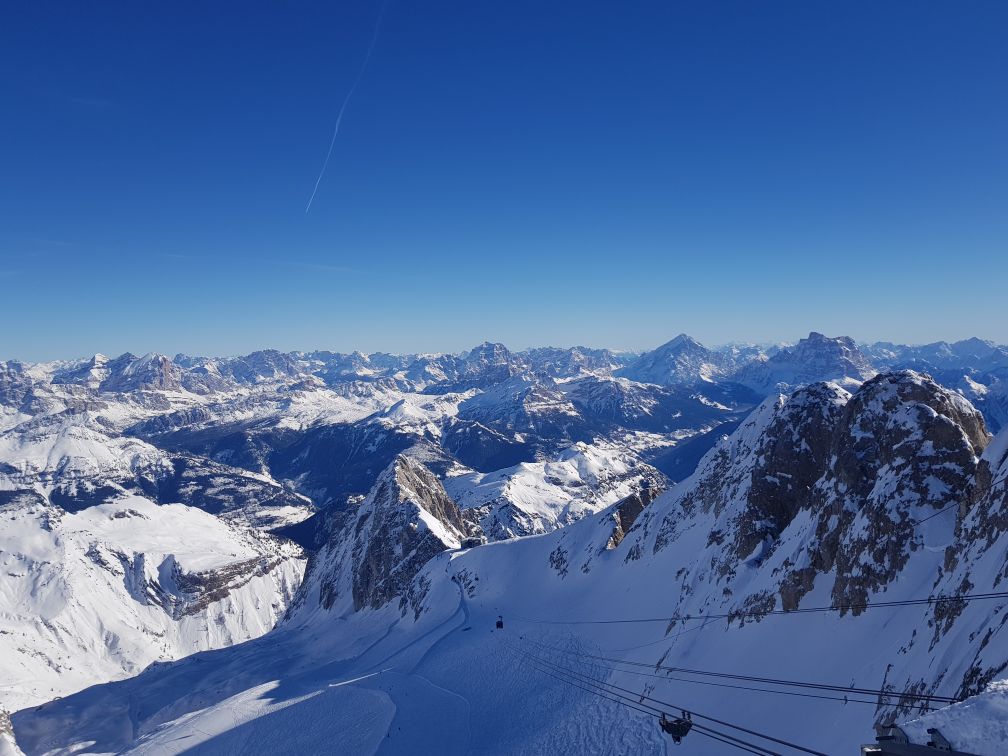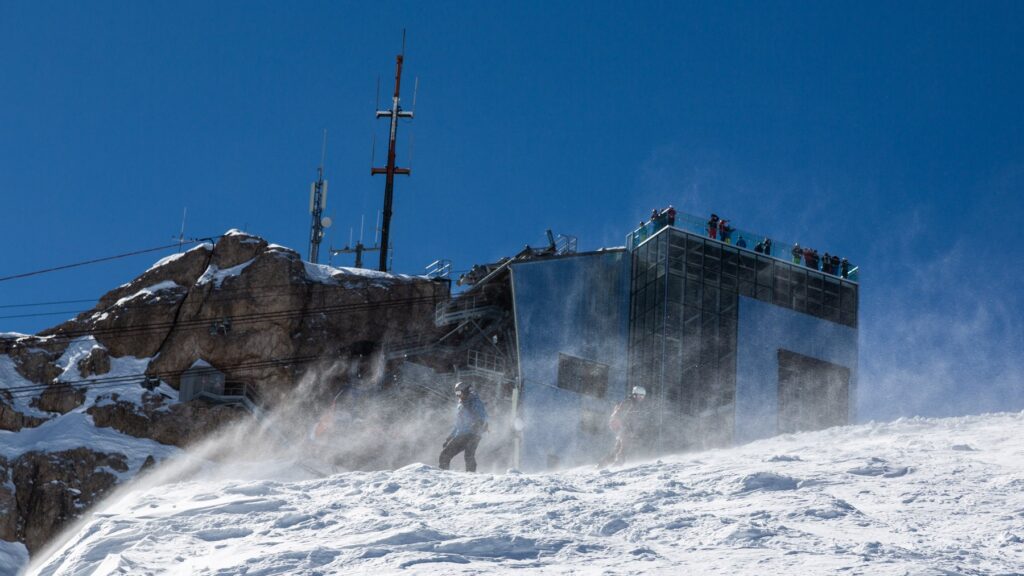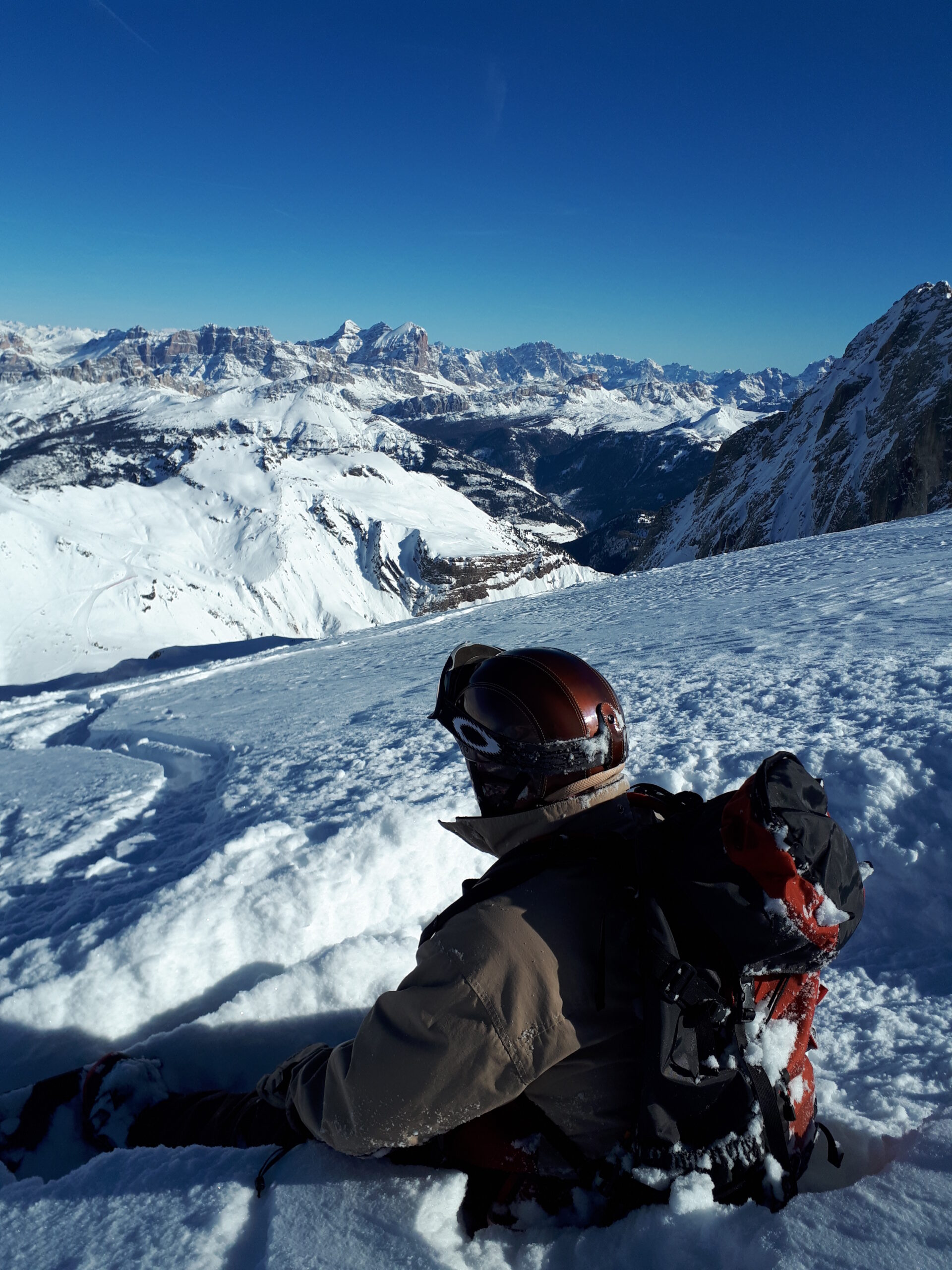As one of the largest ski domains in the world, the Super Dolomiti range offers fantastic sport, in a stunning landscape. Add in quaint and excellent huts to stop at, an unparalleled number of easily accessed resorts and you know that you won’t be disappointed. With the Marmolada range situated at the head of the valley which is directly linked to the Arabba area, you can enjoy intermediate and advanced skiing to your hearts content. Go 10 minutes in the opposite direction and access the excellent and varied family oriented skiing in the Civetta range allowing you to visit three different valleys in one day.

What to expect from skiing in the Dolomites
The Dolomites is a fantastic place to ski. There are many resorts that together form the Dolomiti Superski area, some of which are linked to others and others which are outliers. All of them are worth visiting, some particularly so. We have tried to here give an overview of the areas, with as little bias as possible which should allow you to plan your stay, because quite honestly, visiting only one area is a mistake!
The main draw of skiing in the range are the incredible views – truly some of the finest mountain scenery in the world. This when combined with the incredible interconnected network of pistes and lifts, allows the adventurous skier to truely travel through mountains using their skis as a mode of transport in an experience that is truly unrivalled anywhere in the world. This is not about the “vertical” – the number of metres drop you ski during your stay; but more to do with visiting little villages with beautiful churches and building, sampling the incredible food and wine on offer, and just soaking in the atmosphere.
The slopes in general favour the intermediate skier – there are more red runs here and you can shake a fist at. If you are looking for blacks, there are certain areas which will suit you but it should not be the focus of your trip.
Rather, if you want on-piste tours, which allow you to take in the best scenery, this is the place for you.

When to come
The Dolomites are perhaps at a lower altitude than some areas and are in a location which can sometimes provide a more difficult snow situation. That said, it is important to note quite how extensive the snowmaking facilities are in the range. With global climate change evermore evident, the companys running the range have made huge efforts to ensure that clients are not disappointed when they arrive and it is rare indeed to find that you are unable to ski.
Prime season is the end of January until Mid March, with the season commencing often at the start of December, even late November in some areas, and ending by April. The dedicated ski tourer can often find acceptable conditions well into May! But that is another story and addressed elsewhere.
Gear
With regards to equipment choice, the pistes here are incredibly well-groomed, particularly favouring carving skis over snowboards. The infrastructure can sometimes be a little frustrating for boarders as it has been designed with predominantly skiers in mind. There are hardly any ski tows left, but occasionally there are flat sections which can present a challenge to boarders, especially on long shallow home/valley runs.
Temperatures vary, but usually, are in the range of 0 to -10 degrees Centigrade. Clothing choice should be appropriate for this according to whether you run hot or cold. On higher lifts such as that to the top of Marmolada it is common to see temperatures lower, at -15 degrees.
Renting equipment is of course extremely easy. In Val Pettorina the main source for ski equipment is De Grandi Sport situated in Boscoverde and Malga Ciapela. But there are other shops, for example C Elle Sport and Casa delle Guide in Alleghe, and Ski Crepaz in Caprile.
How fit do I need to be?
Some of the longer tours do require a good level of fitness to feel comfortable skiing, but you do not need to be a honed athlete. We will be releasing details of training and conditioning ideas very soon so keep your eyes peeled!

Cost of ski passes
The best source for this information is directly from Dolomiti Superski which offers a range of ski passes. It is worth mentioning that individual areas offer single station passes and combination passes which allow you a specified number of days in other areas and if you are on a budget, these are worth asking about on your arrival.
Ski areas
The following areas are close to Val Pettorina and driving times are from Sottoguda
Marmolada – 5 minute drive
Civetta – 12 minute drive
Arabba – 30 minute drive, or ski from Marmolada
Val Di Fassa – 20 minute drive, or 1 hour ski from Marmolada
Val Gardena – 40 minute drive to Passo Sella or 30 minutes to Campitello di Fassa and a 10 minute lift to Col Rodella
Alta Badia – 40 minute drive to Corvara, or 1 hour ski from Marmolada
Passo Falzarego / Giau – 25 minute drive to Passo Falzarego
Falcade/San Pellegrino – 35 minutes drive
Latemar/Karrerpass – 1 hour drive
On Piste Ski tours
The following are routes which can completed by an intermediate skier with 2-3 weeks worth of skiing experience and if they can confidently ski a red run.
Sellaronda – Orange clockwise direction around the Sella Massif
Sellaronda – Green anti-clockwise direction around the Sella Massif
Giro della Guerra – a tour through the Civetta, Falzarego, Alta Badia and Arabba/Marmolada ranges
Panorama – This takes you around Val di Fassa through some excellent and less skied areas in utterly beautiful surroundings
Hexentour – This is a less known tour around Alpe di Suisi is probably the easiest in terms of the skiing.